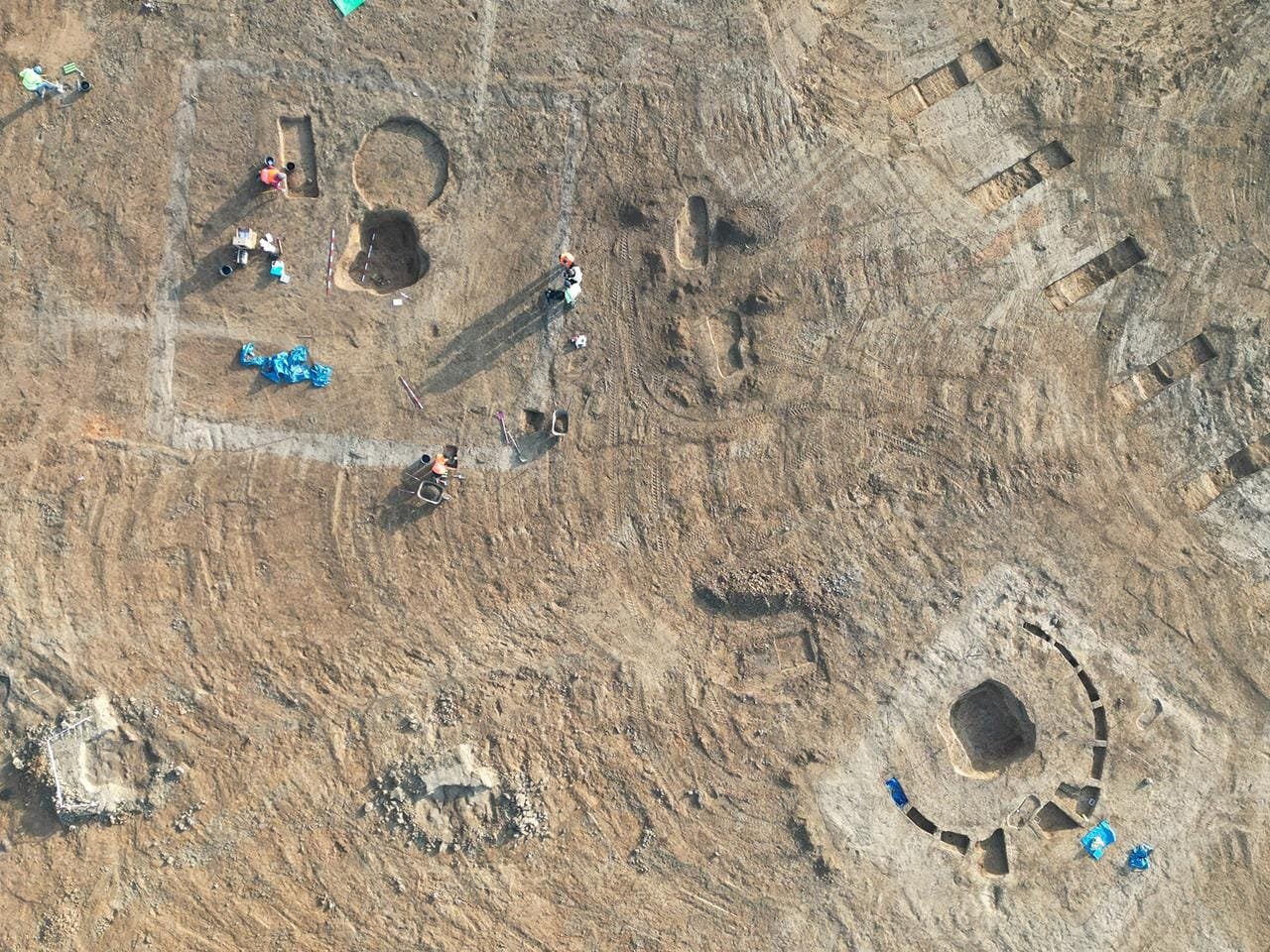Archaeologists from the Archaeological Centre Olomouc (ACO) have uncovered the largest known Bronze Age burial site from the Nitra culture during a rescue excavation along the route of the future D35 highway between Křelov and Neředín near Olomouc.
 An aerial view of the graves. Credit: Archaeological Centre Olomouc
An aerial view of the graves. Credit: Archaeological Centre Olomouc
This site, dating from 2100 to 1800 BCE, is the largest of its kind from the Nitra culture, with 130 graves identified, making it a significant find for understanding this Early Bronze Age culture in Central Moravia.
The burial site contained not only skeletal remains but also a variety of burial goods, including copper ornaments, bone beads, stone arrowheads, copper rings, and bone awls. Men and women were buried differently, with men often interred alongside boar tusks and hunting tools, while women were accompanied by jewelry and antler beads. Lead archaeologist Vendula Vránová said: “Thanks to laboratory analyses, we can reconstruct the physical appearance of the inhabitants, their health, dietary habits, genetic relationships, and migration strategies.”
One particularly intriguing aspect of the discovery was evidence of post-mortem manipulation of some bodies. Vránová explained that this suggests transitional burial rituals were performed even after death, indicating a complex relationship with death and the afterlife within the Nitra culture.
Alongside the Nitra graves, archaeologists also uncovered burial sites from the Corded Ware culture, which coexisted with the Nitra culture around 2600 BCE. A total of 17 skeletal graves were found, with four graves standing out for their depth and the richness of their grave goods, including ceramic vessels, flint tools, and axes. Interestingly, the burial sites of the Nitra and Corded Ware cultures did not interfere with one another, implying a mutual respect between these ancient communities. “The older graves were likely marked with burial mounds, and it seems the younger culture respected these traditions,” Vránová added.
Another key discovery was found near Křelov-BřucH๏τín, where four different burial periods spanning more than 3,000 years were identified. This area was used for burial purposes from the Late Stone Age until the 9th century, during the time of Slavic inhabitants in the Great Moravian Empire. In addition to skeletal graves from the Corded Ware culture, archaeologists unearthed circular ditches, believed to be the remains of wooden structures that marked sacred burial spaces. This is only the fifth site in Central Moravia where such boundary ditches have been identified.
One of the most remarkable finds was the grave of a Germanic warrior from the 3rd century CE, complete with a shield and iron spear, marking the first discovery of its kind in Central Moravia. Researchers also found seven cremation graves containing metal jewelry linked to Celtic culture.
The archaeological research, conducted between August 2023 and April 2024, is now entering a new phase. Researchers will conduct detailed laboratory analyses of the artifacts and skeletal remains, aiming to uncover more about the ancient inhabitants’ physical characteristics, health, diet, and genetic relationships. “Our fieldwork has ended, but now we face the most critical phase—detailed analysis and interpretation of the findings,” Vránová emphasized.
More information: Archaeological Centre Olomouc





